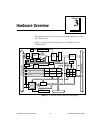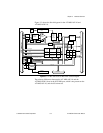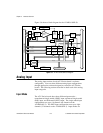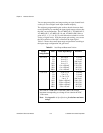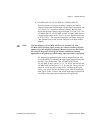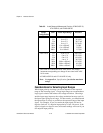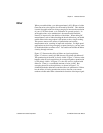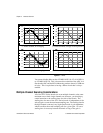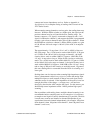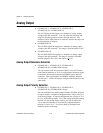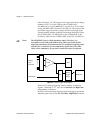
Chapter 3 Hardware Overview
National Instruments Corporation 3-9 AT-MIO/AI E Series User Manual
♦ AT-MIO-16XE-10, AT-AI-16XE-10, AT-MIO-16XE-50
These boards have two input polarities—unipolar and bipolar.
Unipolar input means that the input voltage range is between 0 and
V
ref
, where V
ref
is a positive reference voltage. Bipolar input
means that the input voltage range is between -V
ref
and +V
ref
. The
AT-MIO-16XE-10, AT-AI-16XE-10, and AT-MIO-16XE-50 have
a unipolar input range of 10 V (0 to 10 V) and a bipolar input range
of 20 V (±10 V). You can program polarity and range settings on
a per channel basis so that you can configure each input channel
uniquely.
Note: You can calibrate your AT-MIO-16XE-10, AT-AI-16XE-10, and
AT-MIO-16XE-50 analog input circuitry for either a unipolar or bipolar
polarity. If you mix unipolar and bipolar channels in your scan list and you
are using NI-DAQ, then NI-DAQ will load the calibration constants
appropriate to the polarity for which analog input channel 0 is configured.
The software-programmable gain on these boards increases their
overall flexibility by matching the input signal ranges to those that
the ADC can accommodate. The AT-MIO-16XE-10 and
AT-AI-16XE-10 have gains of 1, 2, 5, 10, 20, 50, and 100 and the
AT-MIO-16XE-50 has gains of 1, 2, 10, and 100. These gains are
suited for a wide variety of signal levels. With the proper gain
setting, you can use the full resolution of the ADC to measure the
input signal. Table 3-3 shows the overall input range and precision
according to the input range configuration and gain used.



